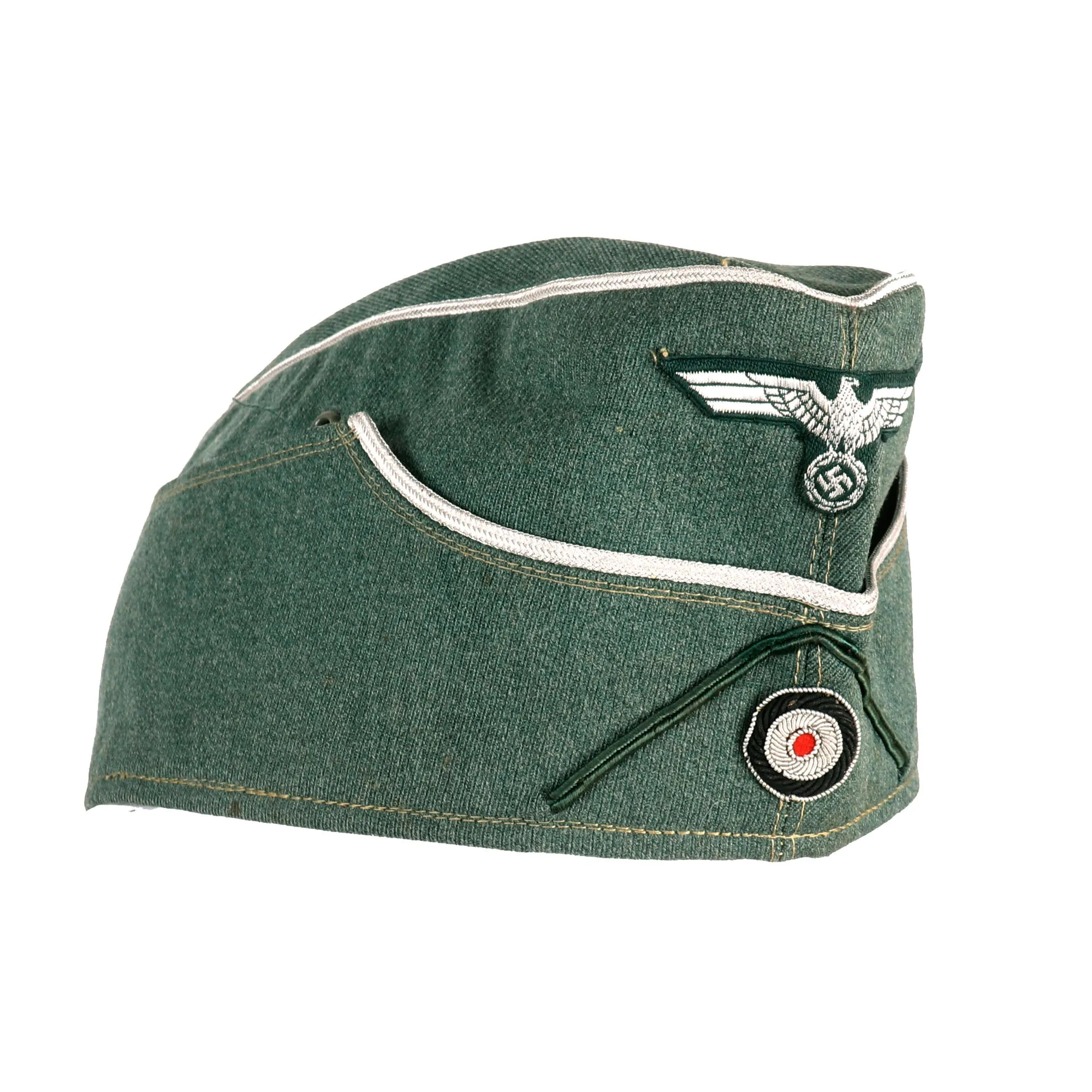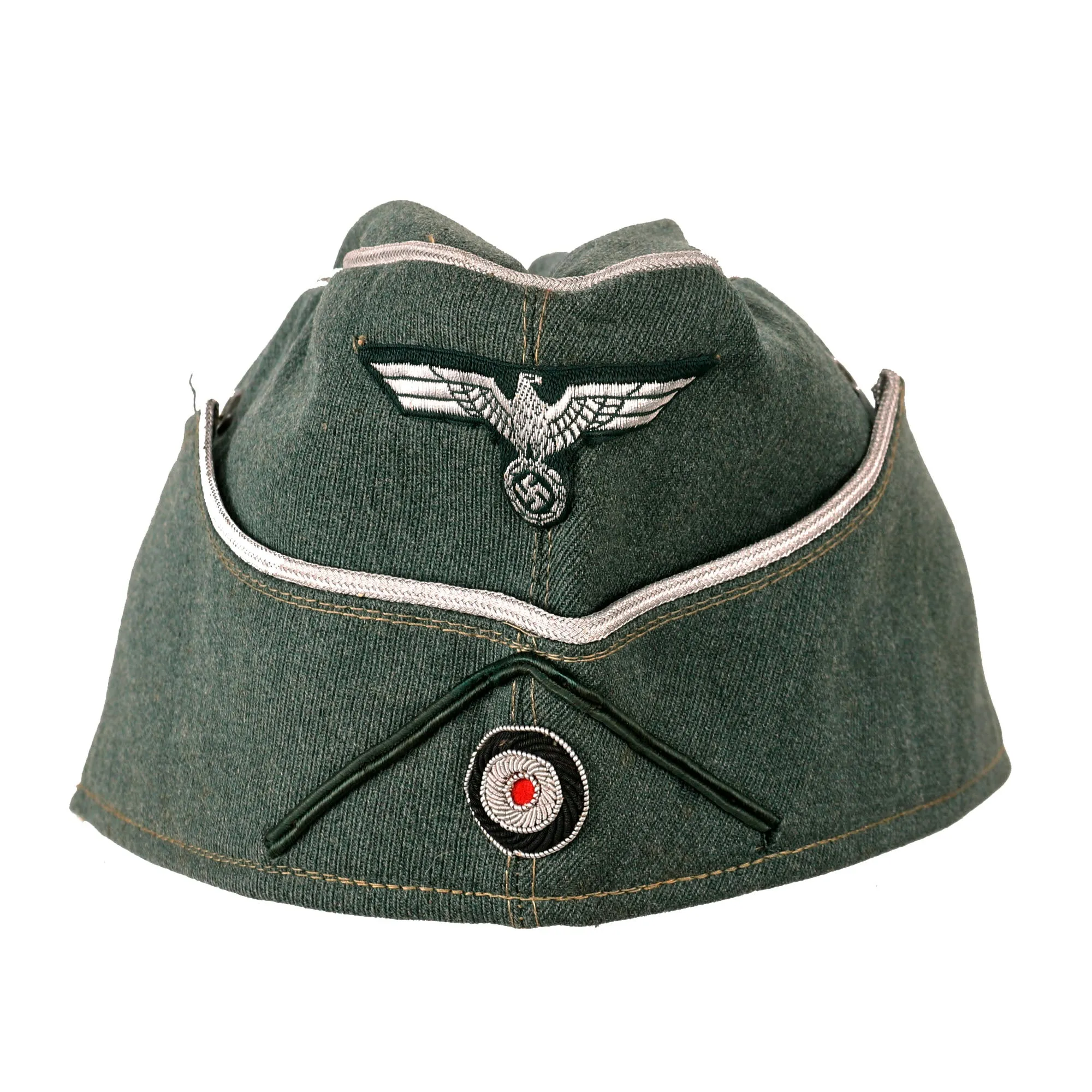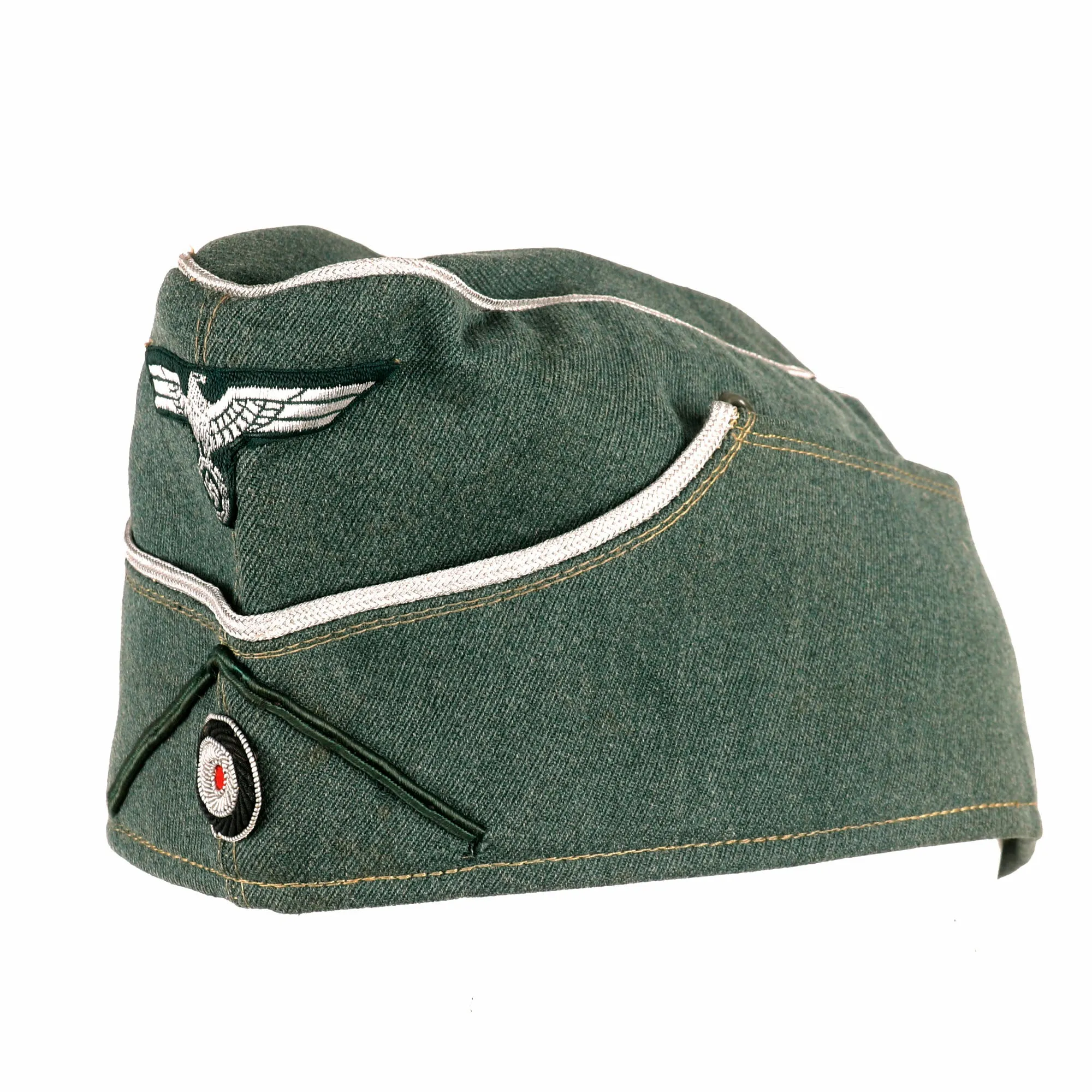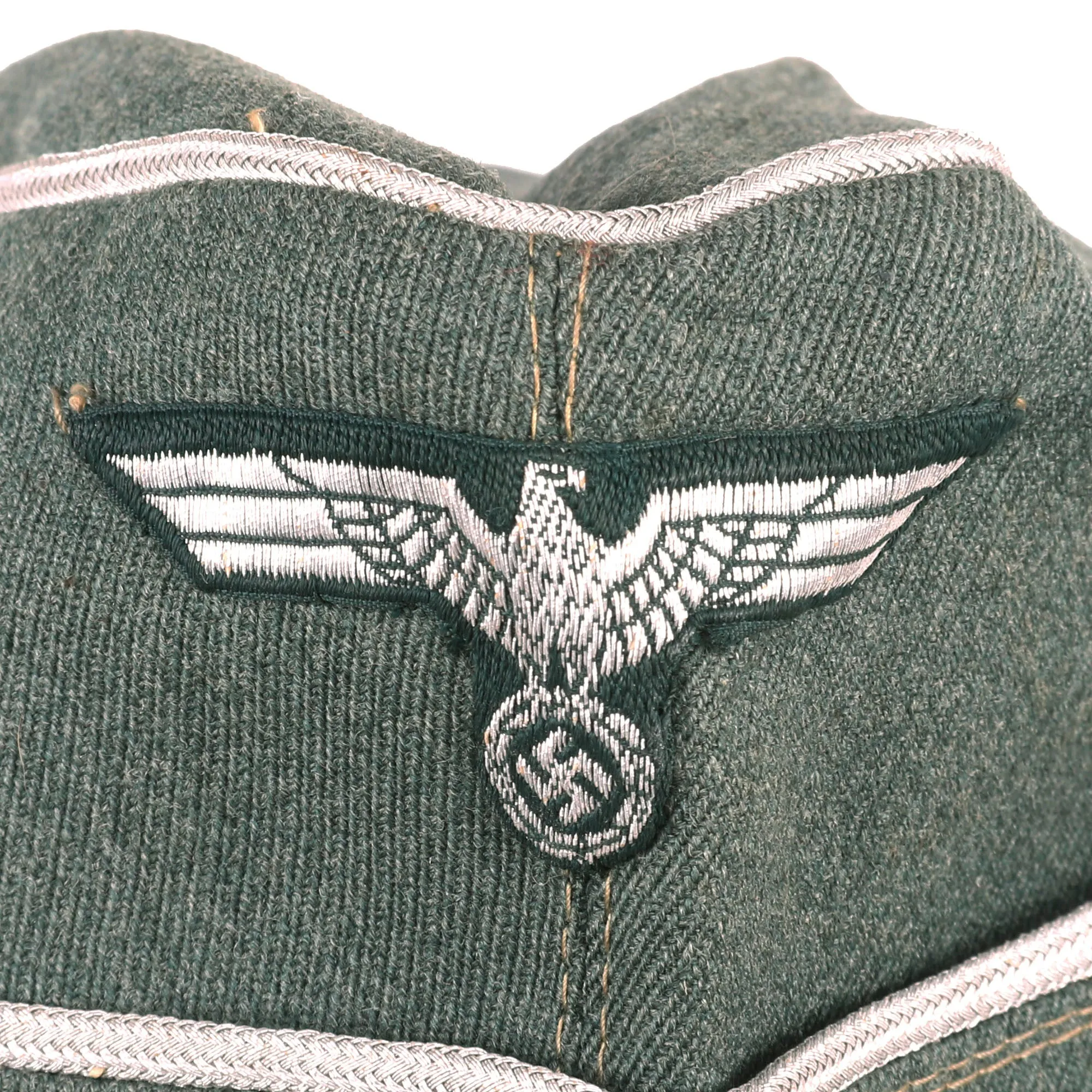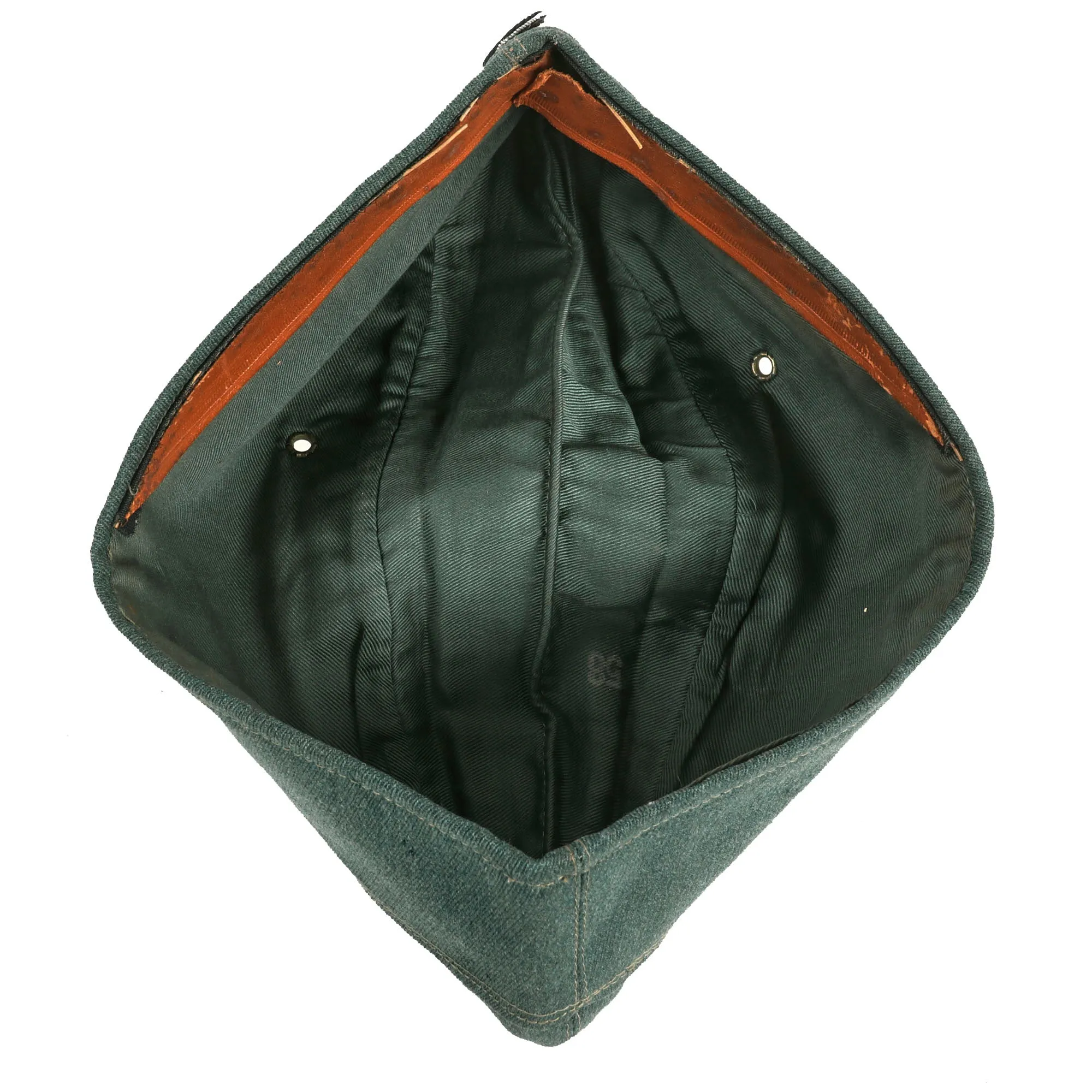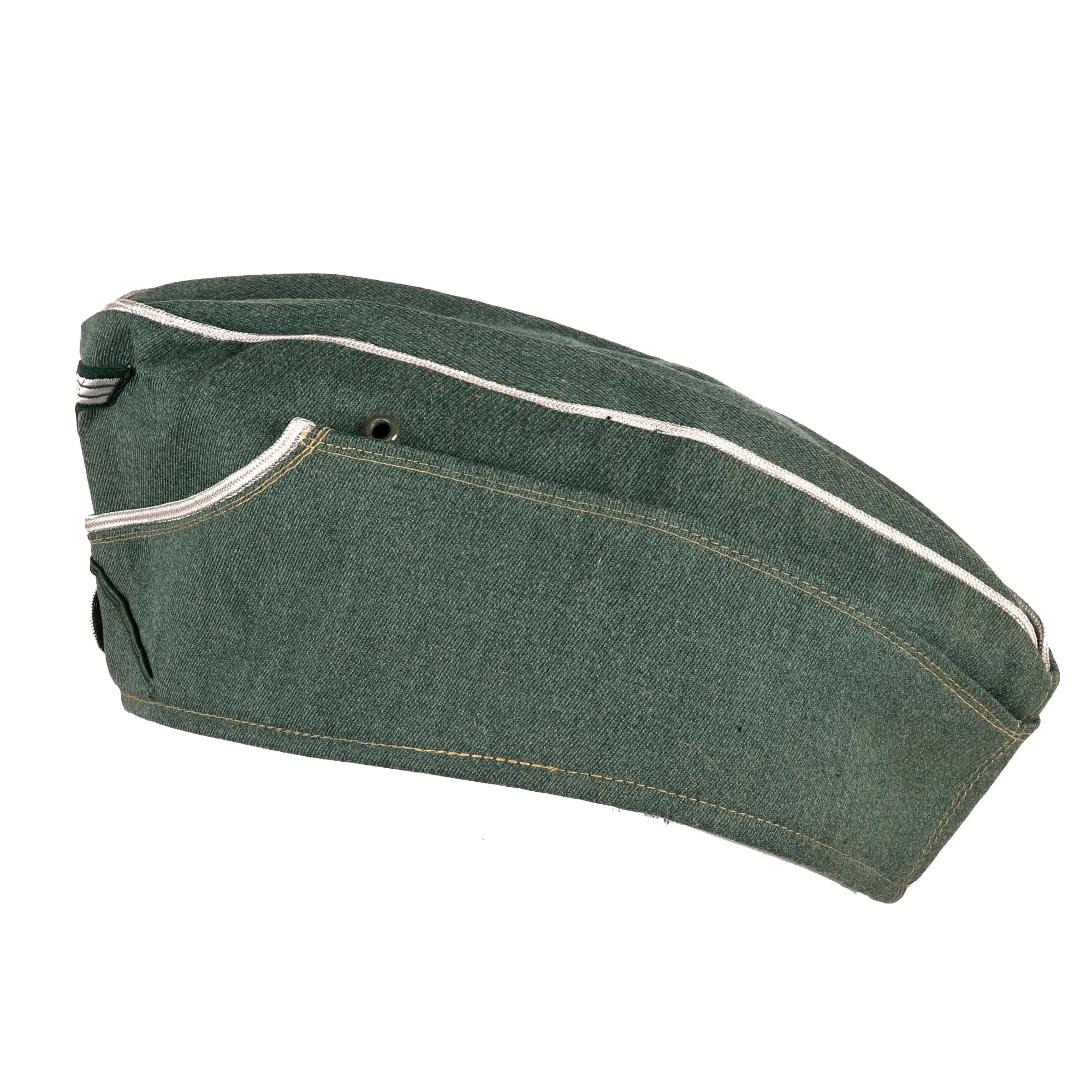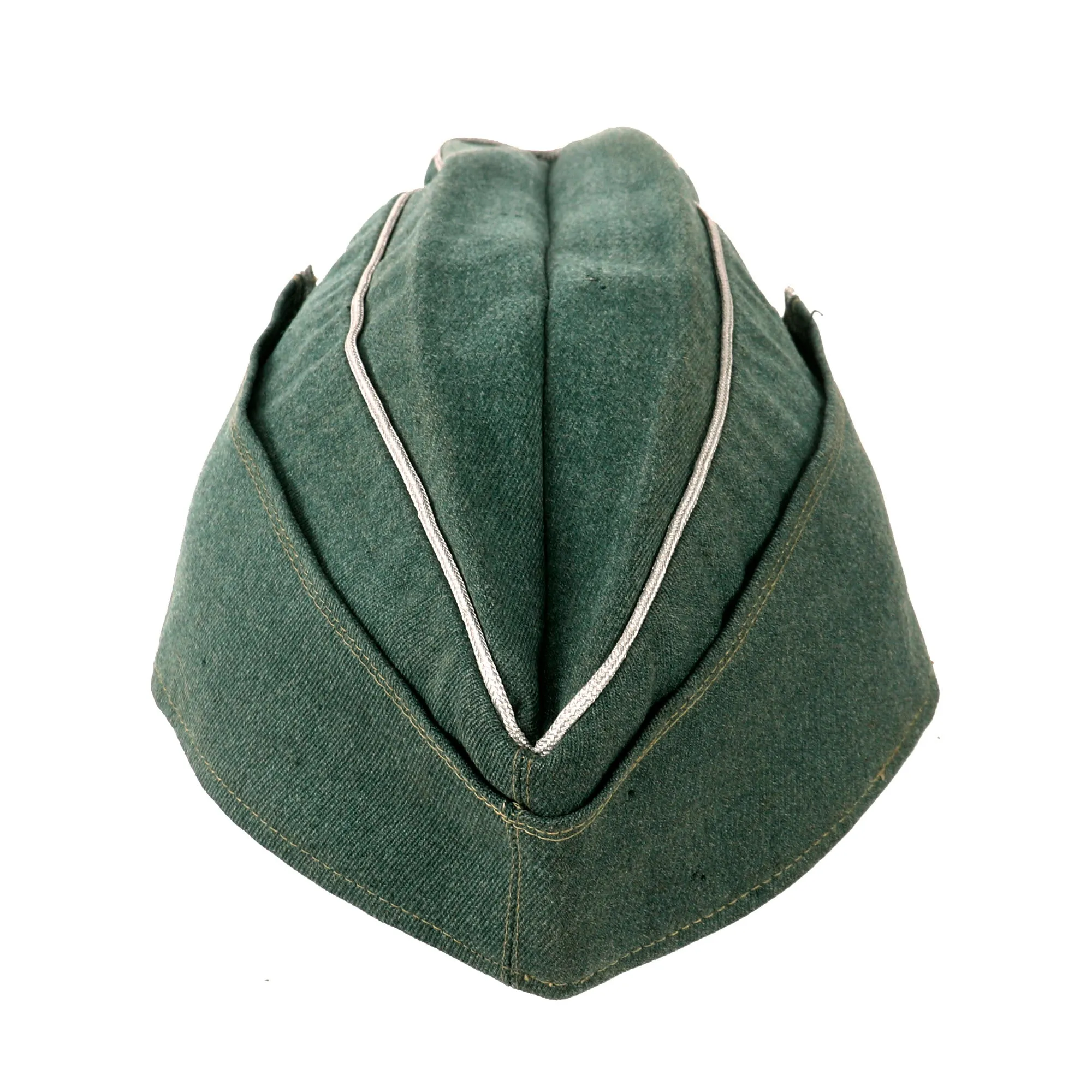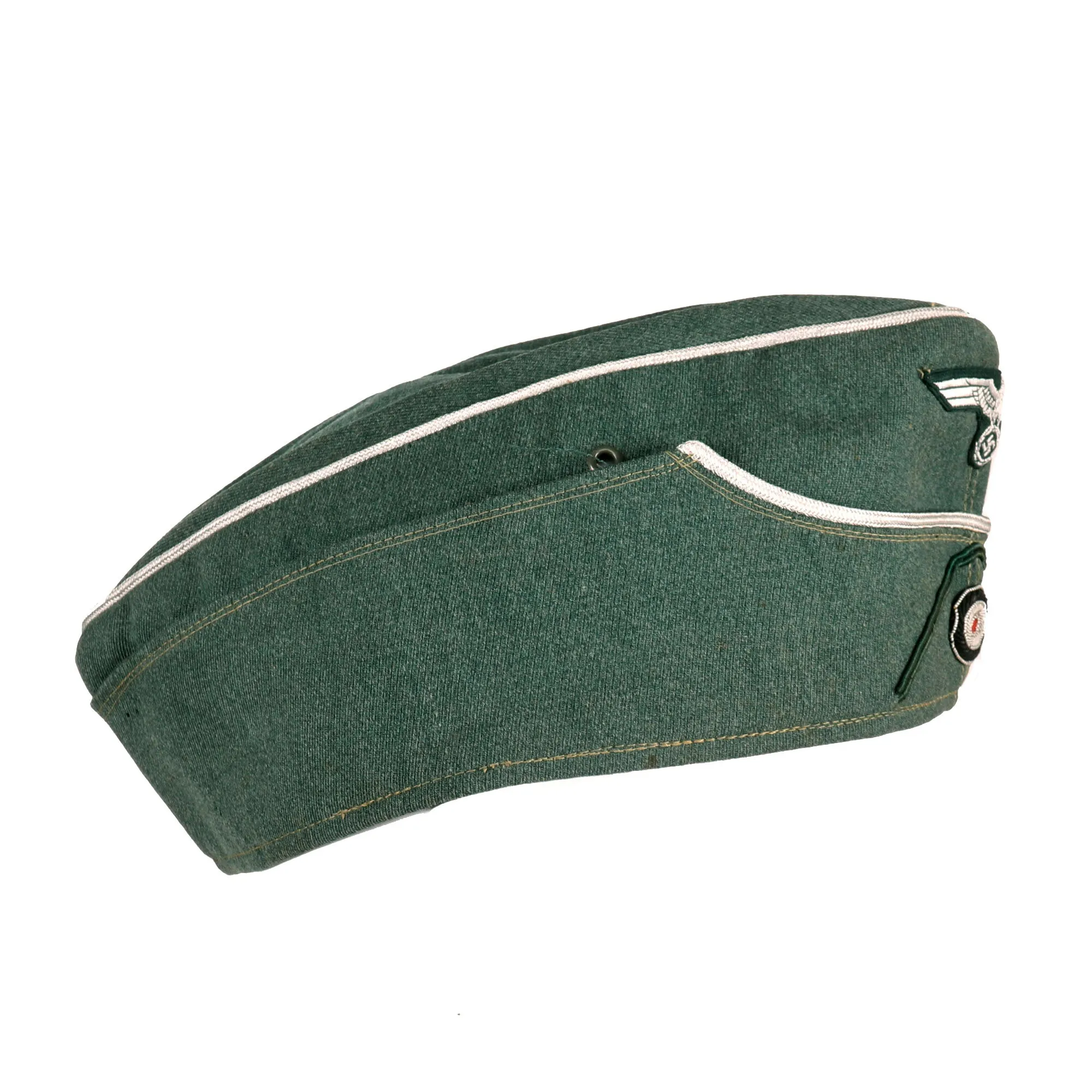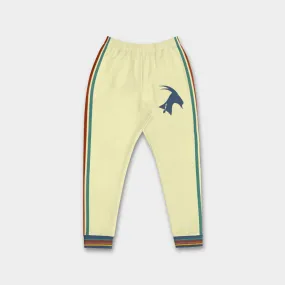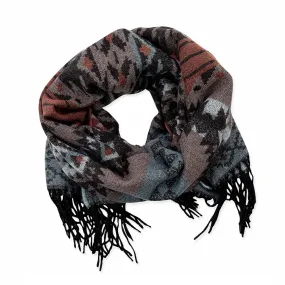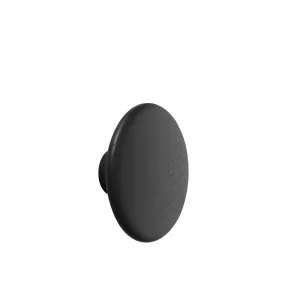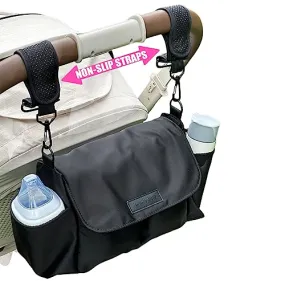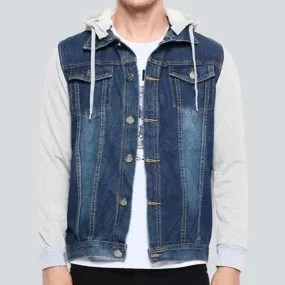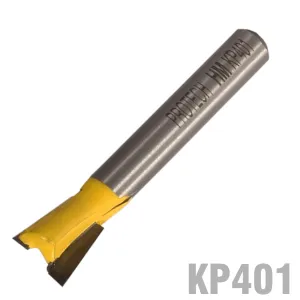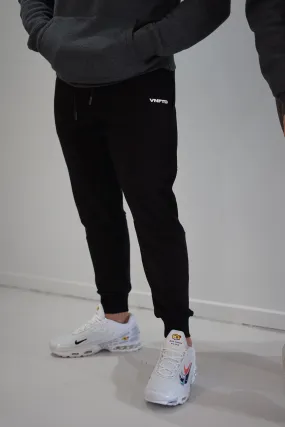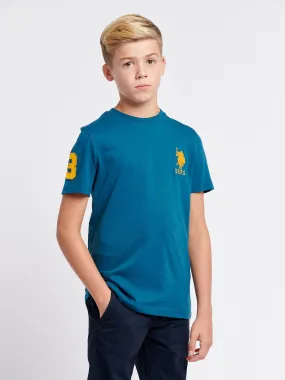Original Item: Only One Available. This is an very good service used condition example of a German WWII Heer Army Infantry Officer's M38 overseas cap (Schiffchen). The overseas cap, nicknamed in German military slang as Schiffchen, or literally "little ship" as it resembled an up-turned row-boat, was standard issue for all branches of the Heer.
This example is constructed of a a field gray (feldgrau) "whipcord weave" wool exterior, with a green brushed canvas lining and tan leather forehead sweatband. The interior is stamped in gray with size 58 on the top. It features a fine early pattern BeVO-style machine embroidered eagle, with silver bullion thread on a dark bottle-green (flaschengrün) base, the standard Heer officer colors prior to 1939. The "scallop" on the front has silver piping on top, which is also around the cap crown, indicating officer issue.
There is a very nice nylon Hellgrün (Light Green) V-shaped soutache, which is the Corps Color (Waffenfarbe) for Gebirgsjäger (mountain troops), Skijäger (ski troops), and Jäger (light infantry troops). The bottom stitches do not go over the soutache, so it was added to the cap after manufacture. It is faded on the exterior, but the original color can be seen under the flaps. Inside of this is a lovely hand embroidered bullion National Tri-Color Cockade.
Condition of this cap is very good, showing light to moderate wear from service and use, which gives it a fantastic "been there" look. There are a few small holes on the exterior, possibly from moth damage, and a bit of staining around the bottom. There is also some staining on the front, and the interior front sweatband has torn down the middle from being folded for so long. The insignia are still in very good shape, showing just a bit of wear.
There are some small tears on the exterior, as well as staining near the front. It also unfortunately has suffered moth damage over the decades, with scattered holes and a lot of the fuzzy "nap" of the fabric missing. The interior shows sweat and oil staining from service, and the front sweatband is stained as well. The soutache on the front is also faded, so that it looks almost the same color as the rest of the cap.
A very nice example of a Jäger Officer's M38 cap, ready to display!
German Jäger Units -
Jäger (hunter) is a German military term referring to specific light infantry units. In German-speaking states during the early modern era, the term Jäger came to denote light infantrymen whose civilian occupations (mostly hunters and foresters) made them well-suited to patrolling and skirmishing, on an individual and independent basis, rather than as part of a large-scale military unit or traditional line infantry. As a consequence, Jäger was used to describe skirmishers, scouts, sharpshooters and runners.
The German Empire had various different Jäger units, which were disbanded at the conclusion of WWI. The Reichswehr of Weimar Germany did keep their traditions somewhat intact, and during the NSDAP led rearmament preceding WWII, various different Jäger units were reformed, the most famous of which were the Heer Gebirgsjäger Mountain Troopers and Luftwaffe Fallschirmjäger paratroopers. Later in the war, Skijäger Ski Troopers and Jäger Infantry units were raised, as well as some smaller units with more specific purposes, such as "Tank Hunters".
Gebirgsjäger material is among the most popular of all German WWII items. They were the light infantry part of the alpine or mountain troops (Gebirgstruppe) of Germany and Austria. The word Jäger (meaning "hunter" or "huntsman") is a characteristic term used for light-infantry or light-infantryman in German-speaking military context.
The mountain infantry of Austria have their roots in the three Landesschützen regiments of the Austro-Hungarian Empire. The mountain infantry of Germany carry on certain traditions of the Alpenkorps (Alpine corps) of World War I. Both countries' mountain infantry share the Edelweiß insignia. It was established in 1907 as a symbol of the Austro-Hungarian Landesschützen regiments by Emperor Franz Joseph I. These troops wore their edelweiss on the collar of their uniforms. When the Alpenkorps came to aid the Landesschützen in defending Austria-Hungary's southern frontier against the Italian attack in May 1915, the grateful Landesschützen honored the men of the Alpenkorps by awarding them their own insignia: the edelweiss. Together with the Fallschirmjäger (Paratroopers) they are perceived as the elite infantry units of the German Army.




